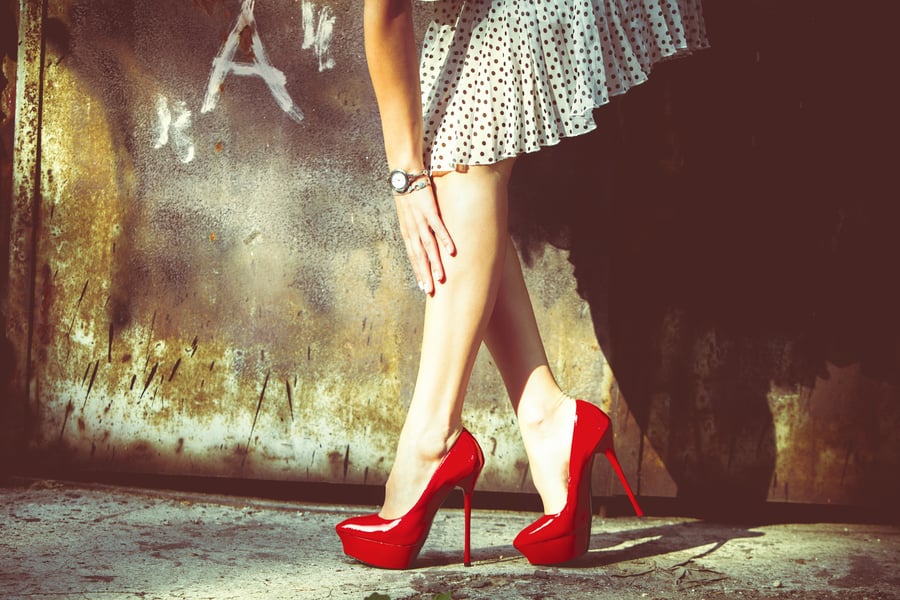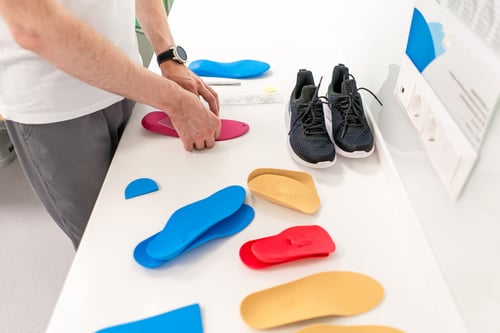How To Protect Your Feet Against Bunions And Improve Foot Health

Do you suffer from bunions? If so, you're not alone. Bunions are a common foot problem that affects millions of people around the world.
They are bony bumps that form on the side of your big toe, causing redness, swelling, and pain when wearing shoes or walking. But don't despair - there is hope!
With proper treatment and care from a podiatrist, you can prevent further damage to your feet and reduce the pain associated with bunions. In this article, we will discuss what bunions are and how to treat them effectively.
Causes of Bunions
Bunions are a common foot problem that can be caused by genetics, ill-fitting shoes, or even arthritis. Genetics plays a role in the development of bunions as some individuals may have a family history of them.
Ill-fitting shoes can also cause bunions to develop due to the pressure they place on your feet. If you wear tight or high heels often, this could lead to bunions forming over time.
Arthritis is another possible cause of bunions as it causes inflammation and swelling in the joints which may lead to bunion formation. It's important to identify the underlying cause of your bunion so that you can get appropriate treatment from your podiatrist if needed.
Signs and Symptoms of Bunions
The signs and symptoms of bunions can vary, but the most common include redness and swelling around the big toe joint, a bony bump on the side of the joint, pain when wearing shoes or walking, and decreased mobility in the affected area.
In some cases, bunions can cause overlapping of the big toe onto the other toes, as well as a thickening of the skin around the bunion. Bunions may also cause calluses or corns to form on the foot due to friction from ill-fitting shoes.
If left untreated, bunions can become worse over time and lead to difficulty walking and increased pain.
Treatment of Bunions
Treating bunions is essential to reduce discomfort and prevent them from worsening over time. Depending on the severity of your bunion, podiatrists may recommend several treatment options designed to reduce pain, correct deformity, and improve foot function.
Oral medications such as anti-inflammatories can help relieve pain and swelling associated with bunions. Stretching exercises are also recommended to strengthen the muscles around the feet, helping reduce bunion formation or slowing down their progression.
Orthotics such as shoe inserts or pads can also be used to help alleviate pressure points on the feet caused by ill-fitting shoes, while customized splints may be prescribed to help realign your toes and reduce bunion formation over time.
However, if none of these options are sufficient in relieving your symptoms, podiatrists may recommend surgery as a last resort. Surgery can involve either shaving down the excess bone tissue causing the bunion or removing it completely if needed.
Prevention of Bunions
The best way to prevent bunions is to wear properly fitting shoes that provide adequate support for your feet. Shoes that are too tight or too loose can contribute to the formation of bunions, so it’s important to choose the right size and style of shoe whenever possible.
Choose footwear with wide toe boxes and a low heel — preferably no more than 2 inches — to minimize pressure on the big toe joint. Also avoid wearing high heels, pointed shoes, and other tight-fitting footwear as these can exacerbate bunions.
It's also important to use orthotic devices or shoe inserts designed specifically for bunions. These inserts can help reduce pressure on the affected area while providing cushioning and arch support to help improve overall foot comfort.
Additionally, wearing protective padding over bunions when wearing shoes can help reduce friction between the bunion and shoe material, further reducing discomfort.
Regular stretching exercises may also be beneficial in preventing bunions from forming or worsening. Stretching helps maintain joint flexibility, reduces the stiffness of the feet muscles, and improves posture alignment — all of which can help reduce the risk of developing bunions or other podiatric conditions.
Complications Associated with Bunions
Complications associated with bunions can be serious if left untreated. Some of the most common complications include bursitis, which is an inflammation of the fluid-filled sacs that cushion and protect the joints; hammertoes, which is a deformity in one or more of the toes; and neuromas, which is a thickening of the tissue around a nerve.
Other complications include calluses, corns, and decreased range of motion in the affected joint. In extreme cases, bunions can even lead to disability if not treated promptly. Not only can bunions lead to physical discomfort such as pain, but they can also cause considerable emotional distress due to their unsightly appearance.
Bunions may also cause friction between shoes and skin resulting in abrasions and blistering, both of which can be painful and difficult to heal.
Finally, patients with bunions may be more prone to developing arthritis due to wear and tear on the affected joint over time.
When to See a Podiatrist for Your Bunions
If you are experiencing pain, swelling, and decreased mobility in your feet that may be caused by bunions, it is important to seek podiatric medical care. A podiatrist will be able to evaluate the severity of your bunion and recommend treatments.
In some cases, surgery might also be recommended as a last resort. Taking these steps early on will help reduce discomfort associated with bunions and prevent them from worsening over time.
Questions to Ask Your Podiatrist About Your Bunions
When visiting a podiatrist about your bunions, it is important to be prepared with questions that you would like answered. Some of the most important questions to ask include:
- What is causing my bunions and how can they be treated?
- What type of treatment do you recommend for me?
- Are there any lifestyle changes I can make to reduce pain or discomfort associated with my bunions?
- How often should I attend podiatric visits?
- Is surgery necessary, and if so, what are the risks involved?
- Will orthotic shoe inserts help provide relief from bunion discomfort?
- Can over-the-counter products such as splints or pads be used in addition to other treatments prescribed by my podiatrist?
Your podiatrist will have answers specific to your individual case and will be able to offer advice on how best to manage your bunions.
If you are experiencing any kind of discomfort in your feet due to bunions, it is important to seek help from a podiatrist at Sweeney Foot and Ankle as soon as possible.
With proper treatment and care, you can prevent further damage to your feet and reduce the pain associated with bunions.
Don't let bunions take control of your life - make an appointment with a podiatrist at Sweeney Foot and Ankle today so that you can start taking steps toward improving the health of your feet! Taking care of yourself now will ensure long-term relief from foot pain caused by bunions.






